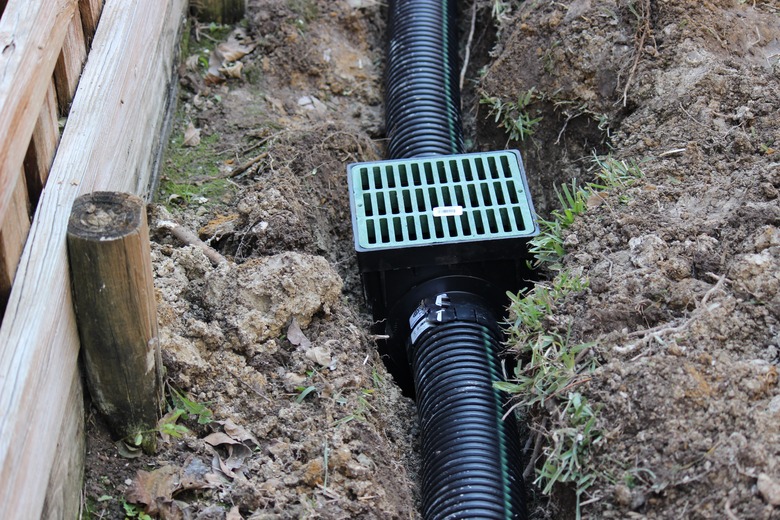What Is A Suitable Pipe Size For A French Drain?
We may receive a commission on purchases made from links.
French drains are landscape features installed next to foundations, parallel to water flow on slopes or in low spots where water collects to facilitate drainage. This type of drain consists of a gravel or coarse rock-filled trench that may be lined with filter fabric and have a drain pipe at the bottom. Proper installation of a French drain, including pipe selection and placement, influences the drain's ability to move water away from structures or low areas.
Suitable Pipe Size
Suitable Pipe Size
A suitable pipe for most residential French drain systems has a 3- or 4-inch diameter. Larger 6- or 8-inch pipes may be utilized, but are most suitable for areas where there is a high volume of water that must be drained quickly. The pipe length required varies depending on the circumstances, but it must be long enough to reach an outlet like a ditch or storm drain. If this is not feasible, the pipe must lead to a sump pump, dry well or similar feature.
Types of Piping
Types of Piping
Piping used for French drains should be perforated to allow for unimpeded water flow. Perforated PVC (polyvinyl chloride) is a widely available and relatively inexpensive option, but there are alternative types that can be utilized. These include pipes made of acrylonitrile butadiene styrene, or ABS, as well as corrugated plastic or polyethylene piping. A French drain variation that consists of a narrow trench dug only wide enough to accommodate a fabricated drain panel may be suitable for landscapes with limited available space.
Pipe Placement and Additional Considerations
Pipe Placement and Additional Considerations
Proper pipe placement influences the drain's ability to function as much or more than pipe size does. The bottom of the trench and the pipe should have a slope between 1 and 3 percent to encourage water flow toward the outlet. The pipe must be covered with at least 12 inches of coarse gravel, washed stone or a similar material. Top the gravel layer with filter fabric or landscaping cloth to block sediments while allowing water to pass through. In areas with silty soils, the drain will benefit from having filter fabric lining the trench under and around the pipe and gravel.
Pipe-Free French Drains
Pipe-Free French Drains
French drains do not necessarily need to contain piping, in some cases, to function as intended. This type of drain can consist of a trench dug to an adequate depth and filled with graded gravel and rubble so the largest materials are at the bottom and the smallest are closer to the soil surface. This type of system has to be dug up and cleaned of silt after a few years of operation but the drain's life can often be prolonged by lining the trench with filter fabric.
